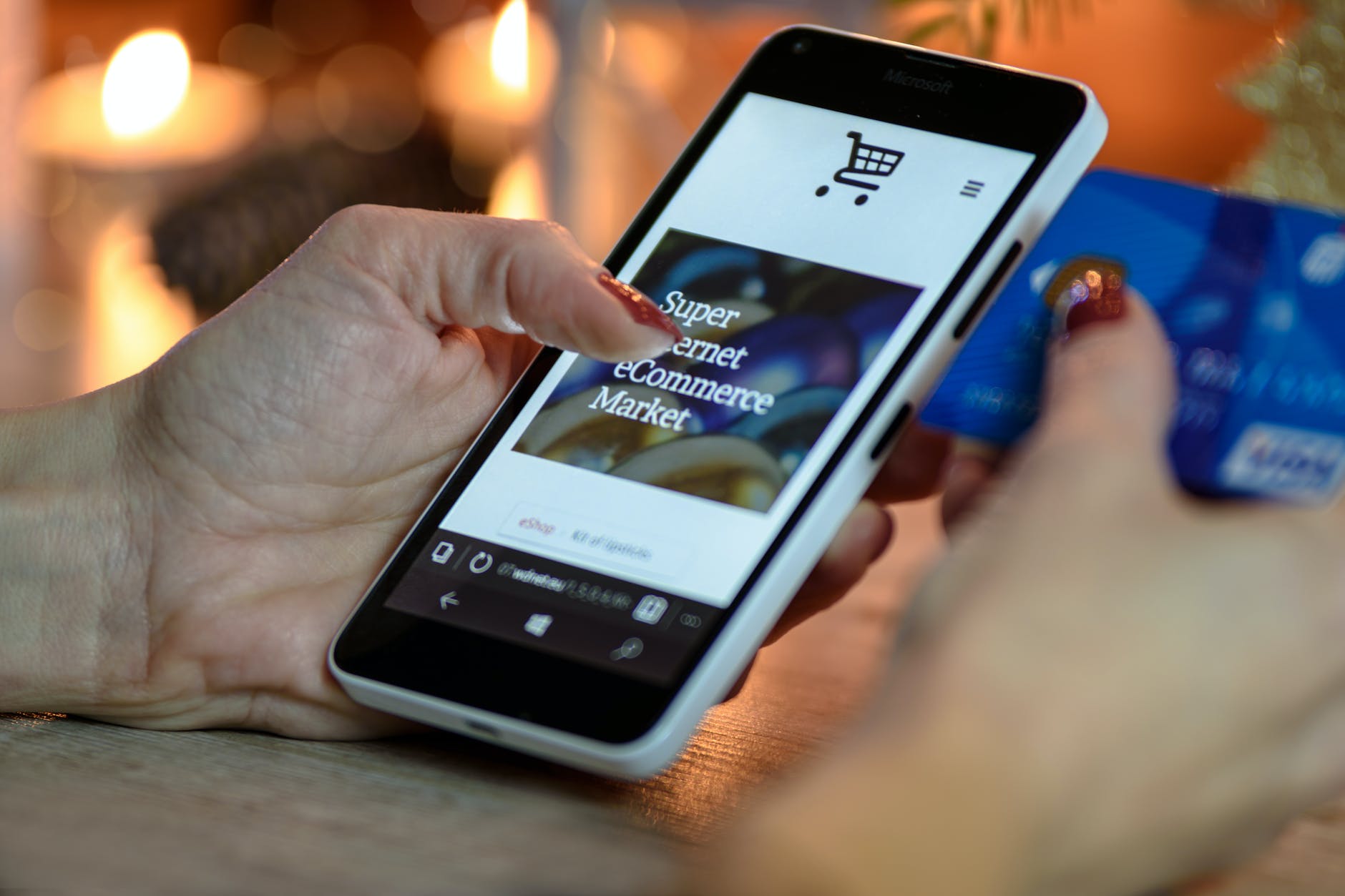3 Advantages of Shopify that Woo Commerce Can’t Beat
3 Advantages of Shopify that Woo Commerce Can’t Beat SHOPIFY VS WOOCOMMERCE : THE GREAT DEBATE Shopify is the biggest

Shopify is the biggest ecommerce platform in the world. It has over 1,300 apps and extensions available on their marketplace, which are integrated with every aspect of the ecommerce experience. From payment gateways to shipping services and even marketing automation, you can connect your shop to just about anything you need. Like WooCommerce, Shopify also offers a user-friendly ecommerce platform. However, that alone may not be enough to convince you to choose it over WooCommerce. Here are some of the advantages that Shopify has over WooCommerce:
Shopify is a heavyweight in the ecommerce industry. It was founded in 2004 as a platform for online business, and it continues to serve millions of customers globally. Shopify is built for scale. The company has grown from an idea into the largest ecommerce platform in the world by avoiding mistakes that other startups have made. It has a proven formula for success. To remain ahead of the competition, Shopify has invested heavily in research and development.
The company has a research and development team of more than 500 and a tech culture that encourages risk-taking. To bring these innovations to market, Shopify has built an impressive partner network that includes top technology companies. Shopify also partners with retailers and brands like Under Armour, Apple and Sephora.
A big reason why so many online businesses choose WooCommerce over other ecommerce platforms is because WooCommerce supports both webstores and mobile apps. Unlike Shopify, WooCommerce is a WordPress-based ecommerce platform that is platform independent. You can use it to run both online stores and mobile apps. This means that you don’t need to build a new website or app to start selling products. You only need to install the right WordPress software and create a shopping cart. You can use any device – be it a desktop, laptop or mobile phone – to access your store. You can use apps like Shopify’s Shopify apps for iOS, Android and Windows 10 to make the buying experience more enjoyable. Woocommerce is winning in the free plugin department. Learn more about which free plugins are available.
Like WooCommerce, Shopify has extensive documentation on how to use their products. You can find in-depth guides on their website for just about everything related to ecommerce management. There are also various forums and support channels to help you with any issues you might be facing. In addition to the support channels, Shopify also has a robust support team that is always available to help. You can find customer care agents in your language and at your preferred time. Shopify also provides analytics and tracking tools to help you get a better understanding of your sales and conversion rates.
A robust analytics suite is a must-have for any serious ecommerce platform. Shopify’s analytics tools are impressive. They include a wide range of tools like product analytics, marketing analytics and conversion tracking. Product analytics help you better understand your customer base and identify the items that are selling the worst.
With product analytics, you can also identify which customers are returning items. With marketing analytics, you can see which marketing strategies are bringing in the most sales. This includes insights like which ads are driving the most clicks or clicks per ad. Conversion tracking helps you understand which marketing strategies and product features are driving conversions. You can also see which landing pages are converting the best.
The ecommerce landscape is changing rapidly. New technologies like blockchain are altering the way consumers purchase products. With these technologies, online businesses have a chance to disrupt traditional industries. To stay ahead of the competition, many ecommerce platforms are offering blockchain-based services. Shopify is no exception.
The company has partnered with IBM to bring blockchain-powered shipping solutions to its platform. Shopify also partners with various shipping carriers to provide shipping solutions for their merchants. Shopify merchants can source shipping solutions from a number of third-party shipping carriers. Shopify also provides marketing automation tools that help users automate their marketing campaigns. This helps you manage your entire marketing process with ease.
The only way for any ecommerce platform to remain relevant and competitive is by developing new and exciting apps. If you are starting a new online store, you can use Shopify’s apps to further enhance your experience. Shopify has built a robust ecosystem of apps and extensions that you can use to grow your online business.
Some of the apps and extensions available on Shopify include social media apps like Instagram, Pinterest, Facebook and YouTube marketing tools like video and image libraries, ecommerce apps and even app storefronts. Shopify’s ecosystem is supported by a powerful system that rewards app developers who make the most revenue. Through the Shopify App Exchange, you can discover and install useful apps from the Marketplace.
Shopify is an established ecommerce platform that has grown over the years. With more than 1,300 apps and extensions available on their marketplace, you can connect your shop to just about anything you need. As an enterprise- grade platform, Shopify is a heavyweight in the ecommerce industry. It was founded in 2004 as a platform for online business, and it continues to serve millions of customers globally.
A platform independent ecommerce platform, WooCommerce supports both webstores and mobile apps. Unlike Shopify, WooCommerce is a WordPress-based ecommerce platform that is platform independent. Shopify offers a robust analytics suite, product analytics, marketing analytics and conversion tracking tools. With plenty of documentation and support, Shopify has a robust support team that is available to help.

grow my business using e-commerce development by Skink Digital
Dropshipping is the concept of purchasing goods in bulk and then selling them in small quantities to individual
customers through websites like Amazon Fulfillment. By purchasing items in bulk, then selling small quantities of that inventory on other marketplaces, you can drastically cut your retail overhead costs. Dropshipping is a great option for many businesses, but there are some key considerations to keep in mind first. First, you’ll need to have a good understanding of your products and the market.
Private-label shipping is a popular e-commerce strategy that combines dropshipping with PLS. You’re dropshipping low- price goods, but you’re also using your own label to provide sales tax, FOB shipping, and custom branding. This means that you get to keep all the revenue for yourself, and you don’t have to worry about shipping and handling costs taking a large portion of your profits. You can use private-label shipping to create your own shipping service, or you can use a third-party provider like Shipstation. Private-label shipping is ideal for businesses that are selling goods online and want to take advantage of lower shipping rates and increased sales. By private-labeling your goods, you can keep more of your profits, and you’re less likely to run into issues with fraudulent goods since you’re the one shipping the products.
Wholesale distribution (WDO) is a business model that offers your customers a large portion of the profit from their goods while you retain a smaller cut. The goods are sold through a network of authorized salespeople that act as an intermediary between the company that’s selling the product and the actual customers. Depending on the goods you’re selling, you could be a distributor for products like electronics, apparel, furniture, or even food. Wholesale distribution is usually part of a joint venture, or POD (pick-or-drop) model, where you pick up goods from a supplier, then drop them off at customers’ doors. You’ll usually be paid weekly or biweekly via check or wire transfer, and you’ll be responsible for marketing and selling the items.
Many e-commerce businesses also create content to help build their brand. One common way to do this is with e- commerce content like blog posts, videos, and whitepapers. In order to create these assets, many online retailers turn to B2B publishing platforms. B2B publishing platforms automate the creation and management of your business content, allowing you to focus on growing your e-commerce business. They’re a great option for businesses that want to stay focused on running their e-commerce operation without spending a lot of time managing content creation. There are hundreds of B2B publishing platforms out there, and it can be difficult to choose one. In order to find the right one for your business, you need to assess how often you’ll need to create content, how often you’ll need to update your content, and how many customers you have.
Shopfront is a term that refers to the storefront of your e-commerce business. It could be the website that your customers interact with, or it could be a physical storefront. Some e-commerce businesses elect to stick to their online storefront, but others choose to open a physical location in order to conduct in-person sales. If you do decide to open a physical store, you’ll have to make some key decisions, like what products to sell, where to locate the store, and how to market the store. All of these decisions will depend on what makes the most sense for you to grow your e-commerce business.
involves purchasing goods from manufacturers on wholesale terms, then using your own labels to sell the goods in retail stores. This means that you retain 100% of the revenue for your products, and you don’t have to deal with the constraints of store inventory and minimums. Private label selling has been around for decades, but it’s becoming even more popular thanks to current technology. Thanks to the proliferation of drop- shipping, and inventory-free logistics, it’s easier than ever to source products that you can private label.
E-commerce channels are constantly changing, and there are new opportunities popping up every day. It’s important to keep up with the latest trends, but it’s also important to choose a channel that’s right for your business.
Growing your e-commerce business—without getting overwhelmed by the choices available. Now that you know the five most common types of e-commerce, it’s time to start testing new channels and services. In order to find the channel that’s right for you, start by evaluating your current business model and what it would take to improve it.
Hey! did you know target and Walmart each have their own marketplace you can sell on? We can help!
3 Advantages of Shopify that Woo Commerce Can’t Beat SHOPIFY VS WOOCOMMERCE : THE GREAT DEBATE Shopify is the biggest

go@Skinkdigital.com Mon – Fri: 10:00am – 7:00pm Table of Contents 5 Reasons Why Every Business Needs a Process Management Software

go@Skinkdigital.com Mon – Fri: 10:00am – 7:00pm CLIENT PORTAL Table of contents WooCommerce – The Ultimate Solution for B2B Ecommerce
go@Skinkdigital.com Mon – Fri: 10:00am – 7:00pm CLIENT PORTAL 5 Reasons Why Every Business Needs a Process Management Software B2B

go@Skinkdigital.com Mon – Fri: 10:00am – 7:00pm CLIENT PORTAL 5 Benefits of Choosing a Local Orlando Marketing Agency for Your
go@Skinkdigital.com Mon – Fri: 10:00am – 7:00pm CLIENT PORTAL Top Free SERP Tools Available in 2023 An image of the

go@Skinkdigital.com Mon – Fri: 10:00am – 7:00pm CLIENT PORTAL Google Ads For Plumbing: Reach More Customers and Boost Your Online